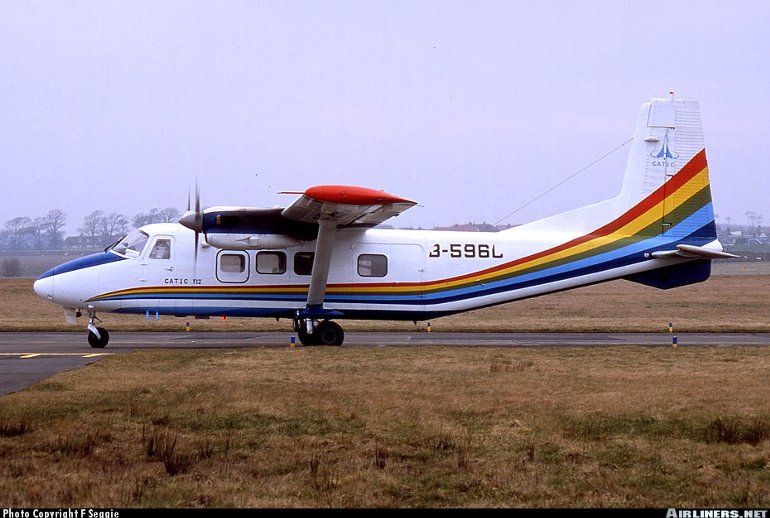Aircraft Technical Data
Harbin Y-11/12

| Details | |
| Country of Origin | China |
| Type | Commuter airliners and utility transports |
| History | The piston powered Y-11 and turboprop Y-12 are Chinese developed regional airliners and utility transports. Design of the Type 11 Transport Aircraft, or Yunshuji 11 (Y-11) began during the mid 1970s as a replacement for the Antonov An-2 utility biplane in Chinese service (licence built in China as the Y-5). A prototype was built and flown at Shenyang in 1975, while pre series and production aircraft are built at what is now the Harbin Aircraft Manufacturing Company. Production Y-11s were built from 1980. Features include two radial engines, capability for rough field operations and STOL performance. Y-11s have seen service as commuter airliners and have also been configured and used for ag spraying. The Y-11B is an improved development powered by Teledyne Continental engines to overcome single engine altitude performance shortfalls. The first Y-11B's maiden flight was on December 25 1990. The Y-12 is a turboprop powered development and has been built in greater numbers than the Y-11. Work on a turboprop powered Y-11 began in the early 1980s, and a Pratt & Whitney Canada PT6A powered and enlarged cabin Y-12 prototype (previously the Y-11T) flew for the first time on August 16 1984. Current production is of the Y-12-II, while the further improved Y-12-IV was granted US certification in March 1995. Canadian Aerospace Group (CAG) and its Panda Aircraft Company subsidiary offers a developed Y-12 as the Twin Panda, which it aims at the twin Otter replacement market. The Twin Panda is based on the Y-12-IV but features more powerful PT6A-34 engines, strengthened landing gear, and upgraded avionics and interior. Production Twin Pandas will be built in China and outfitted in Canada prior to delivery. In 2000 Canadian Aerospace group said it had orders for 35 Twin Pandas. |
| Powerplants | Y-11 - Two 210kW (285hp) Jia Housai 6itsi (AI-14R) nine cylinder radial piston engines driving two blade constant speed propellers. Y-11B - Two 260kW (350hp) Teledyne Continental TSIO-550-B flat six piston engines driving three blade variable pitch props. Y-12-II - Two 460kW (620shp) Pratt & Whitney Canada PT6A-27 turboprops driving three blade constant speed Hartzell props |
| Performance | Y-11 - Max speed 220km/h (120kt), cruising speed at 57% power 165km/h (90kt). Service ceiling 13,120ft. Range 995km (515nm). Y-11B - Max speed 265km/h (143kt), max cruising speed 235km/h (127kt), economical cruising speed 200km/h (108kt). Initial rate of climb 1100ft/min. Service ceiling 19,685ft. Range with max payload 300km (163nm), with max fuel 1080km (590nm). Y-12-II - Max cruising speed 292km/h (157kt), economical cruising speed 250km/h (135kt). Initial rate of climb 1595ft/min. Service ceiling 22,960ft. Range at economical cruising speed with max fuel and reserves 1340km (725nm). |
| Weights | Y-11 - Empty 2050kg (4520lb), max takeoff 3500kg (7715lb). Y-11B - Empty equipped 2505kg (5250lb), max takeoff 3500kg (7715lb). Y-12-II - Max takeoff 5300kg (11,685lb). |
| Dimensions | Y-11 - Wing span 17.00m (55ft 9in), length 12.00m (39ft 5in), height 4.64m (15ft 3in). Wing area 34.0m2 (366sq ft). Y-11B - Wing span 17.08m (56ft 1in), length 12.12m (39ft 9in), height 5.19m (17ft 0in). Wing area 34.2m2 (367.7sq ft). Y-12-II - Wing span 17.25m (56ft 7in), length 14.86m (48ft 9in), height 5.68m (18ft 8in). Wing area 34.3m2 (368.88sq ft) |
| Capacity | Flightcrew of two. Main cabin seats six to eight passengers in Y-11. Y-12 can seat up to 17 at three abreast and 75cm (30in) pitch in Y-12-II, and 19 in Y-12-IV. |
| Production | Approximately 40 Y-11s, two prototype and one production Y-11Bs and over 105 Y-12s built by late 2000. 35 Twin Pandas on order. |
| Related Links | Harbin Y-11/12 |
The backbone of this section is from the The International Directory of Civil Aircraft by Gerard Frawley and used with permission. To get your own copy of the book click here. |
|








